Properties of Pascal's triangle
Pascal's triangle has many interesting properties. Here, we introduce some of them.
How to make pascal's triangle
Put number 1 on the first row, and the beginning and the end of each row. We make other numbers by adding the number above and to the left with the number above and to the right. For example, the second number on the third row is made by adding the first and second number on the second row. Then 2 = 1+1. Similary the third number on the fifth row is 6 = 3+3.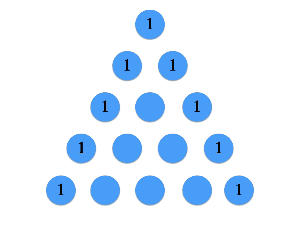
The relation between Pascal's triangle and the binomial theorem
Binomial theorem gives the mathematical structure of the expansion of (a+b)n, and the coefficients that are produced by expansion is called binomial coefficient. Pascal's triangle is constituted by binomial coefficients.
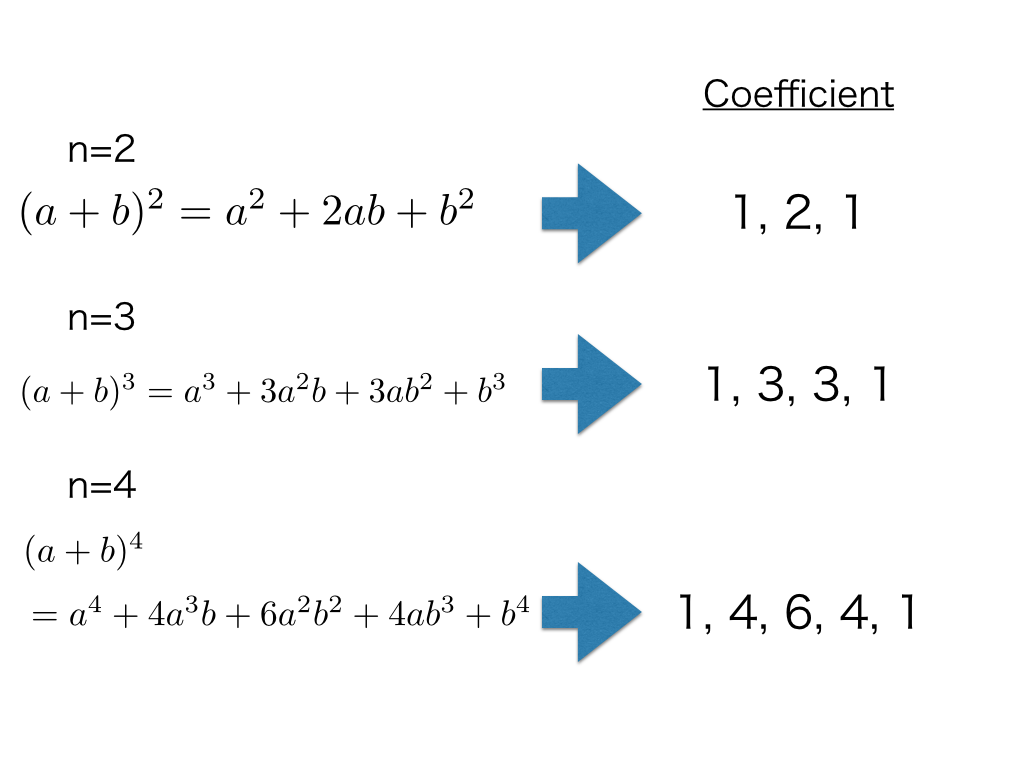
For example, the coefficients of the expansion of (a+b)^2 are 1,2,1, and the coefficients of the expansion of (a+b)^3 are 1,3,3,1. These 1,2,2 and 1,3,3,1 are the third and the fourth row of the Pascal's triangle.
The relation between Pascal's triangel and the number of combinations.
The numbers of combinations to take out m objects out of n objects is expressed by nCm.

Example: the number of combinations to take out 2 cards out of 6 cards.

Then, the number is 15. By arranging the number of combinations, we can construct Pascal's triangle.
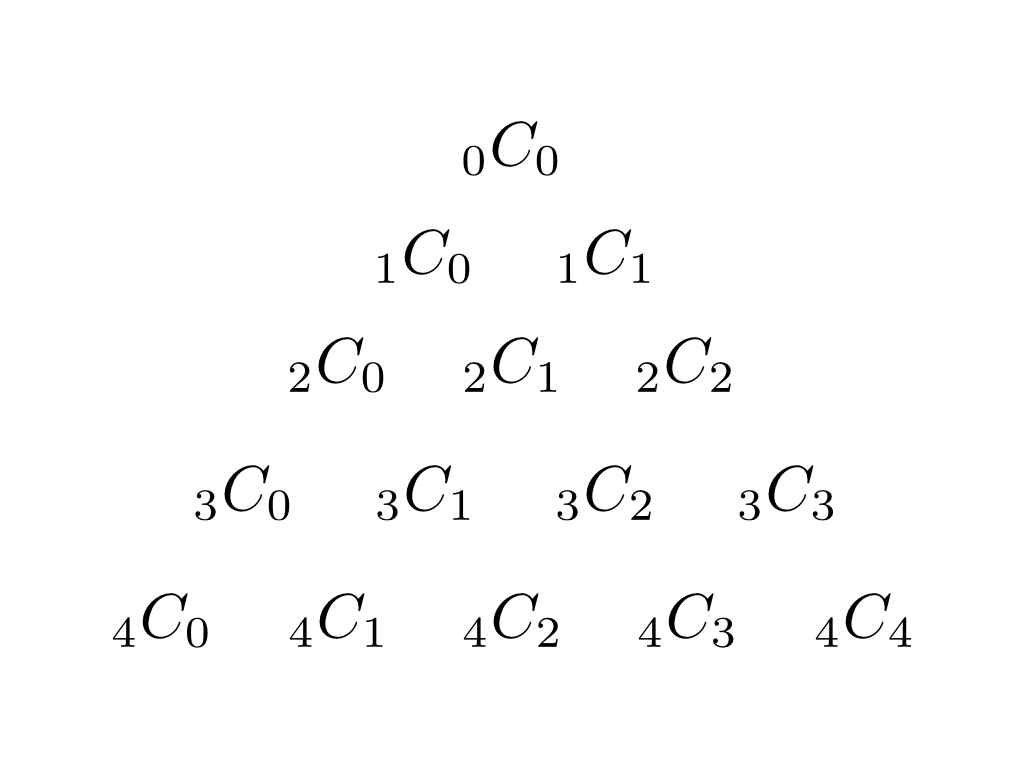
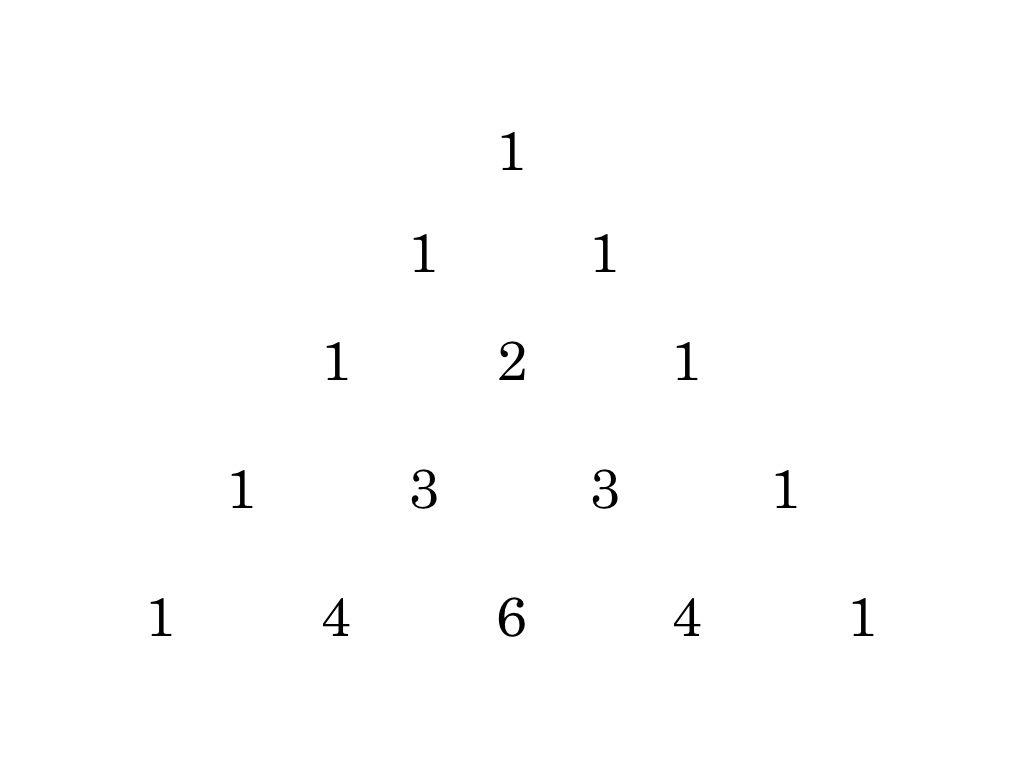
Sequence produced by Pascal's Triangle
It is well known that Pascal's triangle produces varieties of sequences. First, please look at the last number in each row. As you see, the last numbers are 1. Next, please look at the second last number in each row. You find the sequence of natural numbers1,2,3,4,5,6... .
Next, the third last numbers in each row are 1,3,6,10,15,21..., and these are triangular numbers. As for the definition of triangular numbers please consult wikipedia.
Next, the fourth last numbers in each row are1,4,10,20..., and these are tetrahedral numbers.
It is well known that we can construct Fibonacci numbers using numbers in Pascal's triangle. Please look at the numbers on the yellow line in the following figure. We make the sum of numbers in each yellow line, then we have 1,1,2=1+1,3=1+2,5=1+3+1,8=1+4+3,13=1+5+6+1,...This is the well known Fibonacci sequence in which each term is the sum of two preceding ones.
Fractal Figures made by Pascal's Triangle
Fractal Figure is a figure that has expanding symmetry, in other words, you can find a similar figure when you look at a miniture part of the original figure. Pascal's triangle has this kind of property.
This is a fractal figure made by Pascal's triangle, where odd numbers are represented by 1 in purple and even numbers are by 0 in light blue.
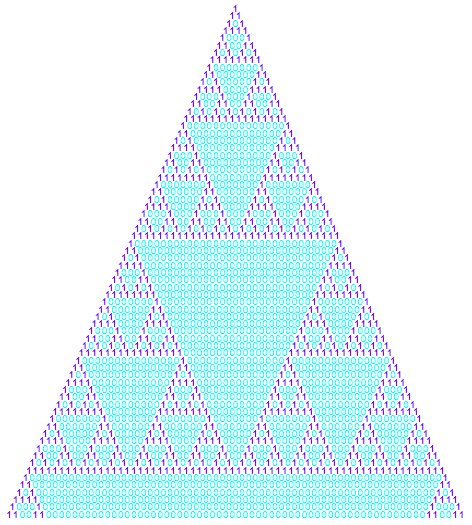
Next, we divide numbers in Pascal`s triangle by 3, and use the remainders. Then color 1 in purple, 2 in red and 0 in light blue.
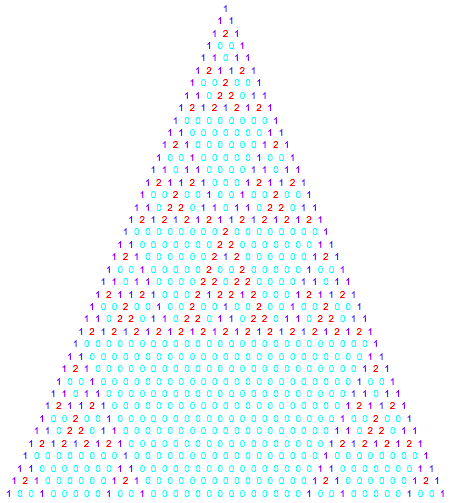
3D Pascal's triangle
There is a 3D (three dimensional )version of Pascal's triangle. 3D Pascal's triangle can be explained by multinomial theorem.

The number enclosed in a blue circle is the sume of three numbers enclosed in a red circle. Let us explain the reason why.
We divide the 3D figure into two 2D figures.
These two triangles of numbers are made by the coefficients of the terms of (a+b+c)3 and (a+b+c)4 when there are expanded. The multinomial theorem explain about the coefficients of the terms of expansion of (a+b+c)n.
These numbers have of 3D (three dimensional) Pascal-like properties.
^3.png)
^4.png)
Let us explain about the 3D Pascal-like property by using the term 12ab2c of (a+b+c)4, and the terms 3ab2, 3b2c, 6abc of (a+b+c)3. The coefficient of ab2c is 12 that is the sum of 6, 3 and 3 that are the coefficents of abc, ab2 and b2c respectivley. Note that we get abc, ab2 and b2c dividing ab2c by b, c and a. We have this kind of properties in other parts of the triangle.
